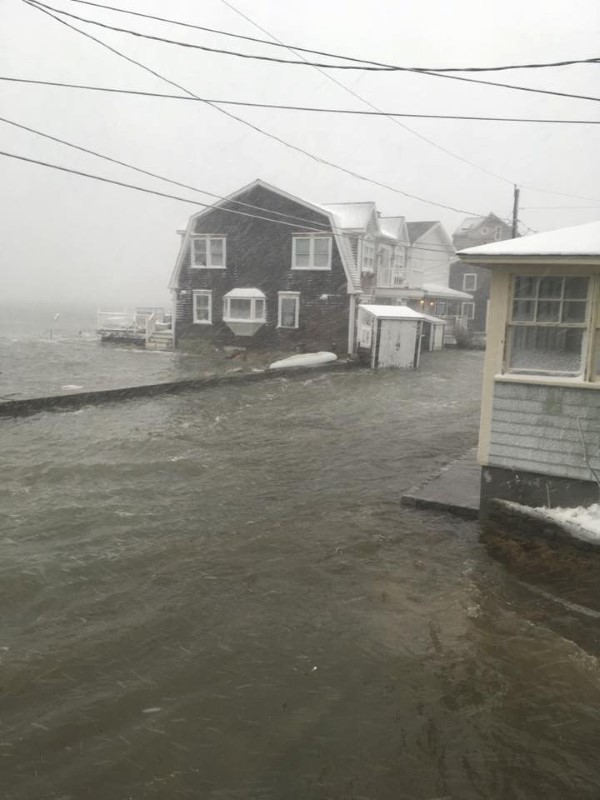 © Reuters. Flooded streets are seen in Scituate, Massachusetts
© Reuters. Flooded streets are seen in Scituate, MassachusettsBy Scott Malone and Jonathan Allen
BOSTON/NEW YORK (Reuters) – Street crews in the U.S. Northeast raced through the night into Friday to clear snow-clogged streets after a powerful blizzard and restore power to homes ahead of a brutal cold spell that has killed more than a dozen people in the United States.
From Baltimore to Caribou, Maine efforts were underway to clear roadways of ice and snow as wind chill temperatures were to plunge during the day, reaching -40 F (-40 C) in some parts after sundown, according to the National Weather Service.
Utility companies across the East worked to repair downed power lines early on Friday as about 21,000 customers remained without electricity, down from almost 80,000 the day before, and issued warnings that temperatures may become dangerously low.
“If the temperature in your home begins to fall, we recommend taking shelter elsewhere until service can be restored. You can find warming centers by contacting local authorities,” National Grid (LON:) power company, which serves Massachusetts, said on Twitter.
The storm, packing winds gusts of more than 70 miles per hour (113 kph), dumped a foot or more of snow throughout the region, including Boston and parts New Jersey and Maine, where heavy snow continued to fall early on Friday.
Many East Coast communities ordered drivers to stay off the roads and closed schools on Friday. Schools in Boston and Baltimore canceled classes while Newark, New Jersey schools were opening two hours later than usual on Friday.
The storm on Thursday caused a 3-foot (0.9-metre) tidal surge which flooded the area around Boston’s historic Long Wharf with icy seawater. Firefighters used an inflatable raft to rescue one motorist from a car submerged in water up to its door handles, Boston Fire Commissioner Joseph Finn told reporters.
The storm forced thousands of flights to be canceled and New York City’s two main airports halted flights because of whiteout conditions.
“Fliers are urged to contact their airlines for information on resumption of specific flights before going to the airport,” said JFK on Twitter as the airport announced that flights would resume at 7 a.m. Friday.
Passenger train operator Amtrak said it reduced service on several routes in the Northeast on Friday, including its train between Washington D.C. and Boston. Transit systems including New York’s Long Island Rail Road and Metro-North commuter lines reduced service and told passengers to expect delays on Friday.
The storm was powered by a rapid plunge in barometric pressure that some weather forecasters called a bombogenesis, or a “bomb cyclone.” It brought high winds and swift, heavy snowfall.
The wintry weather has been blamed for at least 14 deaths in the past few days, including three in North Carolina traffic accidents and three in Texas because of the cold.
Nearly 500 members of the National Guard were activated along the East Coast to assist with emergency response, including 200 in New York state, the U.S. Department of Defense said in a statement.
Officials reported traffic accidents throughout the Northeast and the storm’s reach extended to eastern Canada.
On Wednesday, the same storm brought historic cities in the Southeastern United States their heaviest snowfall in three decades.
(This story corrects Celsius amount in paragraph 2)
(Additonal reporting by Brendan O’Brien; Editing by Richard Balmforth)
Source: Investing.com





























